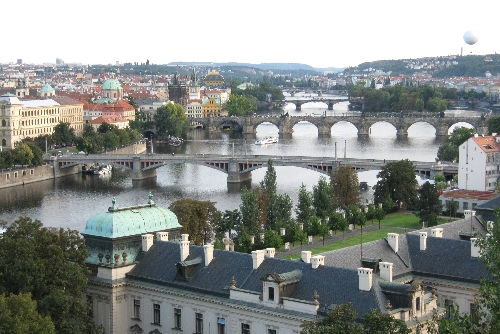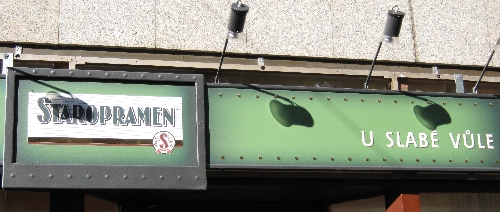
I must apologise once more that, despite returning safely to Prague last Friday evening, other than approving a couple of nice comments (and deleting a host of spammers!!), I’ve taken far longer than originally intended to write a new post about last week’s conference.
As I explained in my previous post, the theme of the conference was ‘Entertaining Angels – Hospitality as Mission’. The title is based on a verse from the New Testament where the writer of the Letter to the Hebrews tells his readers, “Do not forget to show hospitality to strangers, for so by doing some people have shown hospitality to angels without knowing it” Hebrews 13 v2. But who are the hosts who give the hospitality and who are the guests that receive it?
One speaker, Professor Musa Dube from Botswana, pointed out that we are all guests on this earth. Basing her Bible Study on the creation narrative in Genesis 1, she rightly pointed out that that it is God’s earth, for he created it, and we are his guests, invited to live in it and care for it. However, in the context of being clergy serving in the Church of England’s Diocese in Europe, we are nearly all guests, living and working within host countries. I say ‘nearly all’ because, as a result of the Porvoo Agreement between the Anglican Churches of Great Britain and Ireland and the Lutheran Churches of the Nordic and Baltic countries, a number of Lutheran priests from the Nordic and Baltic countries work in Anglican chaplaincies in their own native countries and were present at the conference.
Not only are we guests in our host countries, many Anglican Chaplaincies in Europe, including mine here in Prague, are guests of another Christian Church or denomination using buildings that do not belong to us. Only in some of the long established chaplaincies in major capital cities or in resort areas where ‘Brits’ first settled in the nineteenth century, do Anglicans worship in their own Church buildings. But whilst we are guests in host countries and of host Churches, we in turn seek to be hosts and provide hospitality to expat English-speakers who find themselves well away from their normal support mechanisms. How we do that – how we fulfil that important mission, was a constant theme of both our speakers and of our resulting discussions.
As is so often the case at conferences such as this one, some of the most valuable and profitable learning and discussion took place over meals or in convivial late night sessions in the bar. Not too late I might add as we all had to be washed, dressed and in the Chapel for worship at 07.30 each morning! It was a privilege to meet up with five other clergy who all trained with me at Wycliffe Hall Theological College. 1987/8 was clearly a very good year!
It was also good to get to know many people who, up until now, were purely names in a directory or on a prayer list. It was valuable to listen to their experiences, some in similar major city locations like mine, as well as to others who work in more rural or coastal areas of France and Spain where so many English-speakers have moved for a ‘better life’ or to retire.
The Suffragen Bishop in Europe, The Rt. Rev’d David Hamid is also a blogger and you can read his take on the conference in his post appropriately entitled, ‘Entertaining Angels – Hospitality as Mission’. It also includes a link to a number of photos of the conference though I don’t appear in any of them.
One thing about the conference for me was a certain case of déjà vu. Our flat in Prague was built as part of the first stage of a major development of flats on the site of a former brewery. Ever since we moved in just over a year ago, we have had to live with the builders working on the fourth and final stage of the development directly in front and to the side of our balconies. The noise and dust can at times be quite irritating. What do I find when I arrive at Kardinal Schulte Haus? The building is under repair and there are workmen repairing the roof, directly outside my third floor bedroom window! At least the noise ensured I wasn’t late for Morning Prayer!





